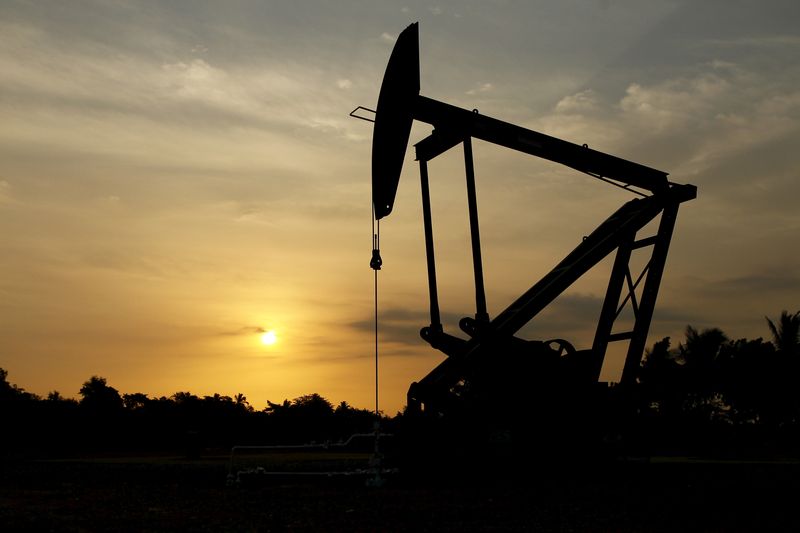By Scott DiSavino
(Reuters) -Oil prices climbed about 3% on Tuesday after Iran fired a salvo of ballistic missiles at Israel in retaliation for Israel's campaign against Tehran's Hezbollah allies in Lebanon.
Brent futures gained $1.86, or 2.6%, to settle at $73.56 a barrel, while U.S. West Texas Intermediate (WTI) crude rose $1.66, or 2.4%, to settle at $69.83. Earlier in the day, both crude benchmarks were up by over 5%.
Alarms sounded across Israel and explosions could be heard in Jerusalem and the Jordan River valley after Israelis piled into bomb shelters.
Clay Seigle, an independent political risk strategist, said in an email that Israel "will not hesitate to widen its military offensive to hit Iran directly. And Iran's oil assets are very likely on the target list."
An Israeli attack on Iranian oil production or export facilities could cause a material disruption, potentially more than a million barrels per day, Seigle said.
In the Red Sea, meanwhile, another Iran-backed group, the Houthis in Yemen, claimed responsibility for attacking at least one of two vessels damaged off the port of Hodeidah. The Houthis have launched attacks on international shipping near Yemen since last November in solidarity with the Palestinians in the war between Israel and Hamas in the Gaza Strip.
"In case of an escalation, Iran's proxies, the Houthi rebels and Iraqi paramilitaries, might launch attacks on Middle East oil producers, namely Saudi Arabia," said Tamas Varga, an analyst at PVM, a brokerage and consulting firm that is part of TP ICAP (LON:NXGN).
"There is now a genuine fear that oil supply will be impacted, and nervous and volatile trading is anticipated until the picture becomes clear," Varga added.
Before news that Iran was planning a missile attack, the oil market was trading down near a two-week low as the outlook for increased supplies and tepid global demand growth outweighed fears over an escalating Middle East conflict and its impact on crude exports from the region.
A panel of ministers from the OPEC+ producer group will meet on Oct. 2 to review the market, with no policy changes expected. Starting in December, the OPEC+ group comprising the Organization of the Petroleum Exporting Countries plus allies such as Russia is scheduled to raise output by 180,000 bpd each month.
In addition, the possibility that Libyan oil output will recover also weighed on the market earlier on Tuesday. Libya's eastern-based parliament agreed on Monday to approve the nomination of a new central bank governor, which could help to end a crisis that has reduced the country's oil output.
Iran and Libya are both members of OPEC. Iran, which is operating under U.S. sanctions, produced about 4.0 million bpd of fuel in 2023, while Libya produced about 1.3 million bpd last year, according to data from the U.S. Energy Information Administration (EIA).
Weekly U.S. oil storage data is due from the American Petroleum Institute trade group later on Tuesday and the EIA on Wednesday.

Analysts projected U.S. energy firms pulled about 1.3 million barrels of crude out of storage during the week ended Sept. 27. [EIA/S] [API/S]
If correct, that would be the third withdrawal in a row and compare with a withdrawal of 2.2 million barrels during the same week last year and an average increase of 400,000 barrels over the past five years (2019-2023).